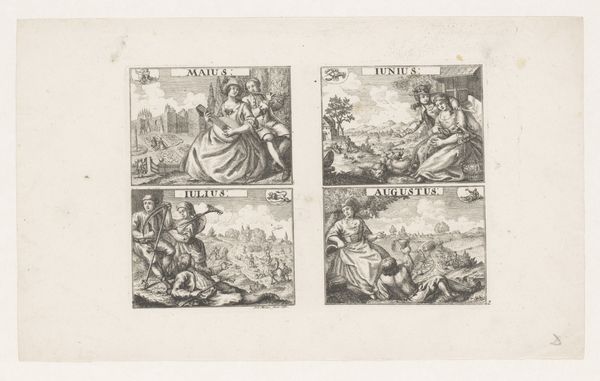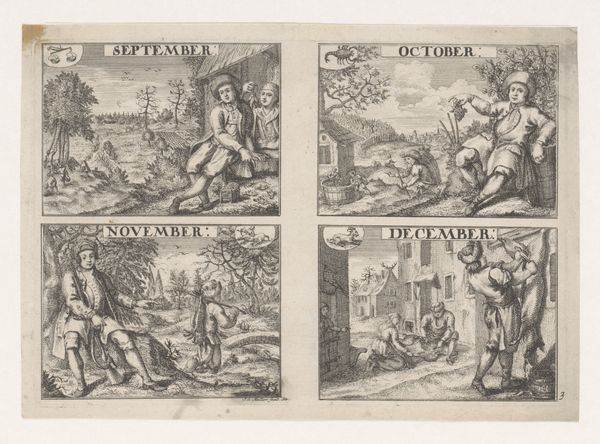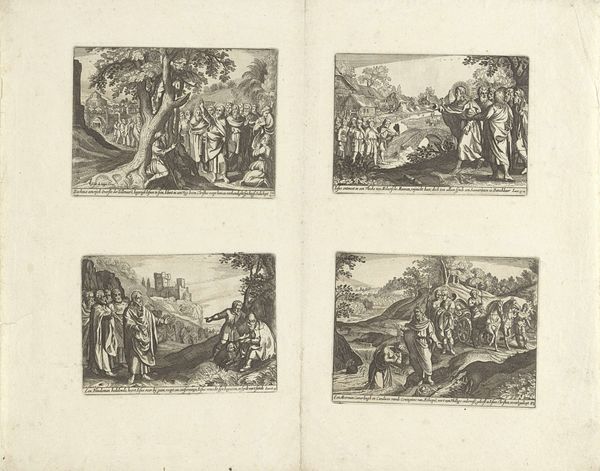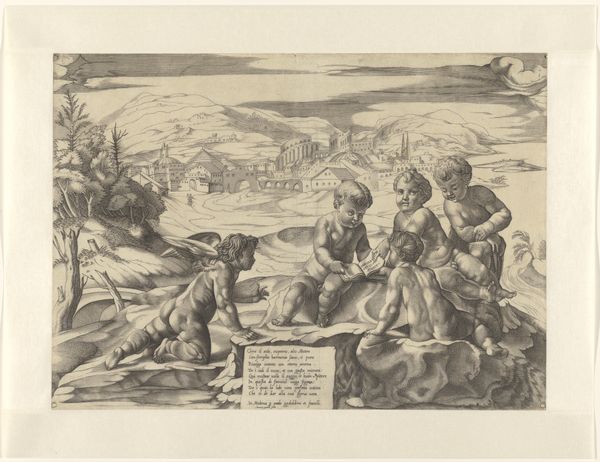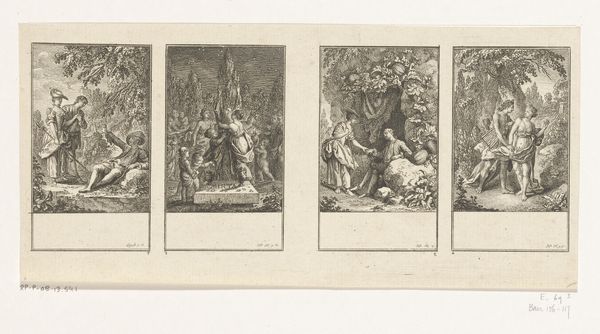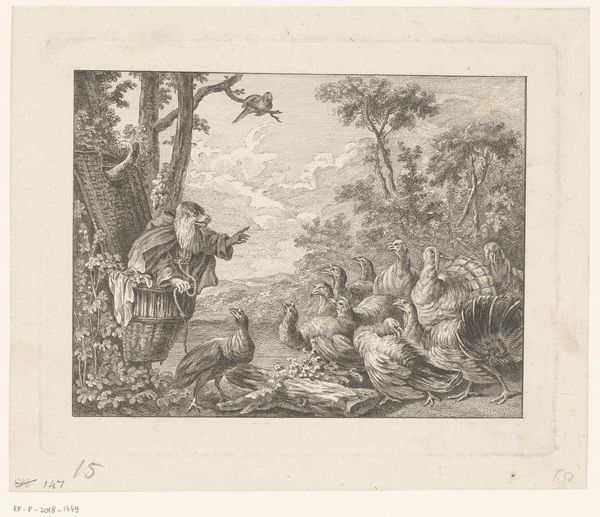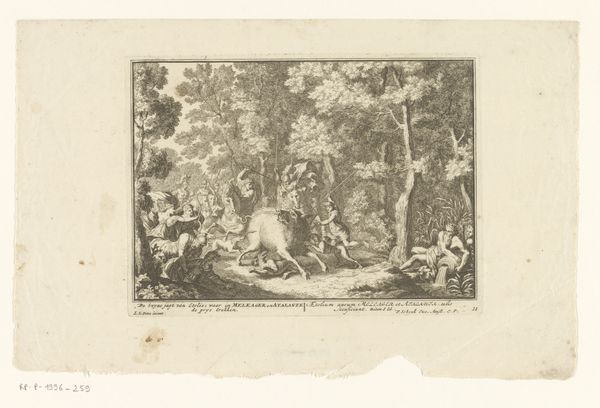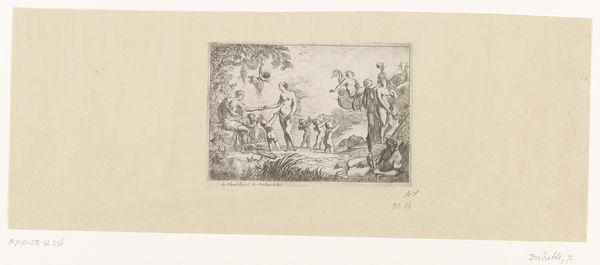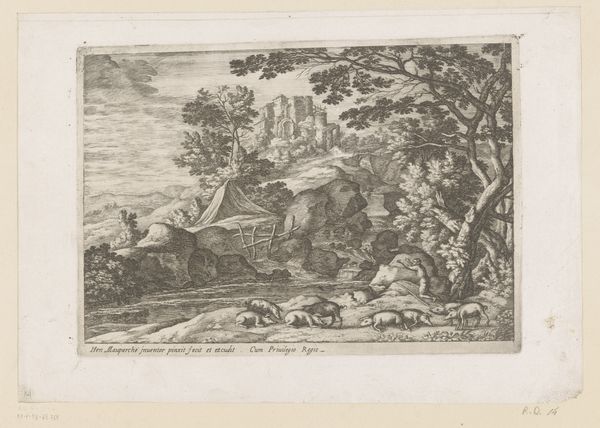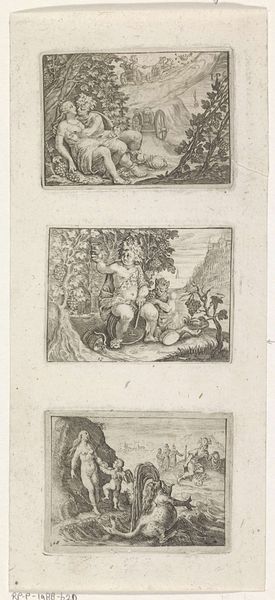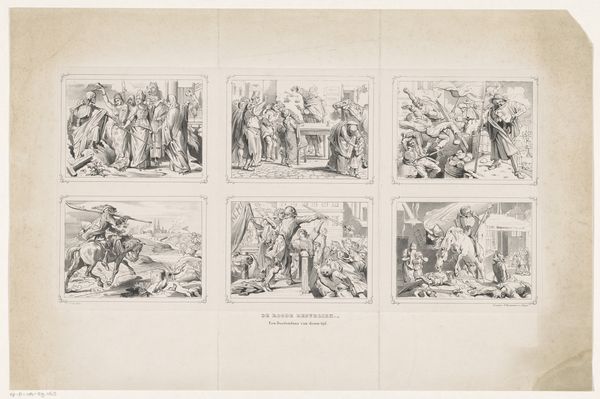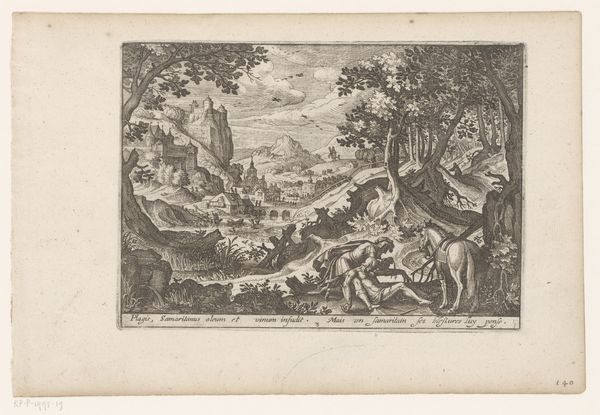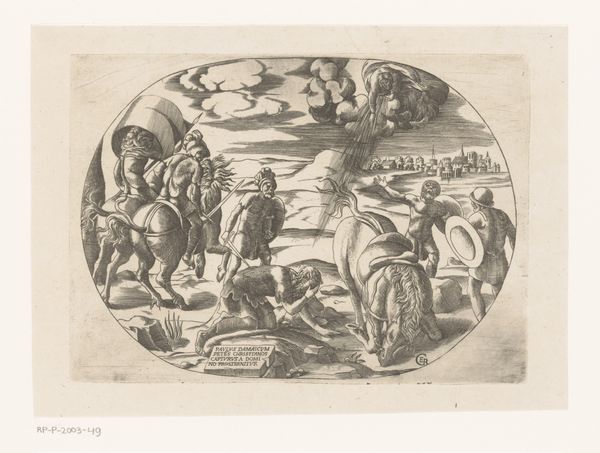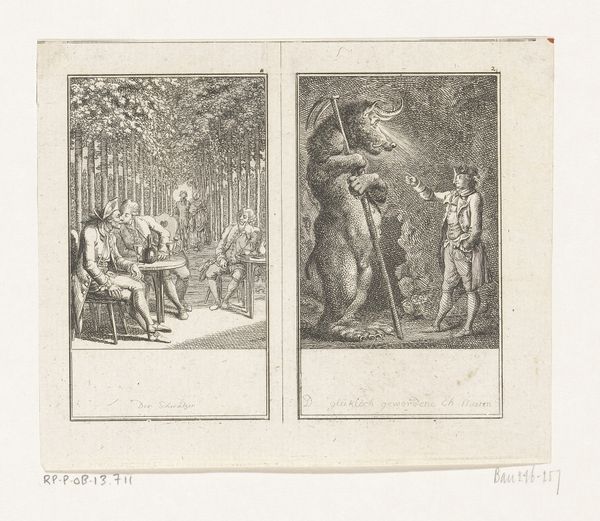
print, paper, ink, engraving
# print
#
landscape
#
figuration
#
paper
#
ink
#
cityscape
#
genre-painting
#
history-painting
#
northern-renaissance
#
engraving
Dimensions: height 134 mm, width 192 mm
Copyright: Rijks Museum: Open Domain
Curator: Let's take a look at this print dating back to the 18th century. It is called "Januari, februari, maart en april" and it was created by Johann Sebastian Müller. Editor: It strikes me as having a charmingly old-fashioned feel. The composition, broken into these four vignettes, gives each month its own distinct character, yet they clearly belong together. Curator: Indeed. This is an engraving on paper and ink. We see a very literal representation of the first four months of the year depicted. In each small panel, a scene from the corresponding month unfolds. Notice how "Januari" portrays people struggling through the snow, while in "Aprilis", we see a celebration of spring and renewal. Editor: Precisely. I'm drawn to how the artist has differentiated each season not just through subject matter but through the compositional arrangements as well. In "Januari," the lines are sharp and stark mirroring the harshness of winter. Compare that to "Aprilis," which uses softer curves and forms to create a sense of ease. Curator: These scenes aren't merely about depicting the weather; they offer glimpses into social life during that period. We see the ways people worked, relaxed, and observed their respective cultures at particular moments. The choice of activities surely reflects prevailing norms of conduct too. The artwork invites reflections about social history and hierarchies during the artist's life. Editor: From my perspective, the strength of the work really is the arrangement and clear organization of each of the boxes. The contrast between heavy, dark lines, particularly noticeable in the “Januari” panel, and the light airiness in "Aprilis" provides a dynamic tension. Curator: And one should also notice the importance of the location of this art: imagine viewing it within the context of a merchant's guild or even at a market, as they would have in the eighteenth century. It offers glimpses into their lives and world views. Editor: So, beyond being an object of aesthetic intrigue, what has this work left me considering? It is the ingenious organization of pictorial elements: I see structure but also expression. Curator: For me, I'm intrigued by how social practices shift and are perceived and framed over time and within changing cultural contexts.
Comments
No comments
Be the first to comment and join the conversation on the ultimate creative platform.
